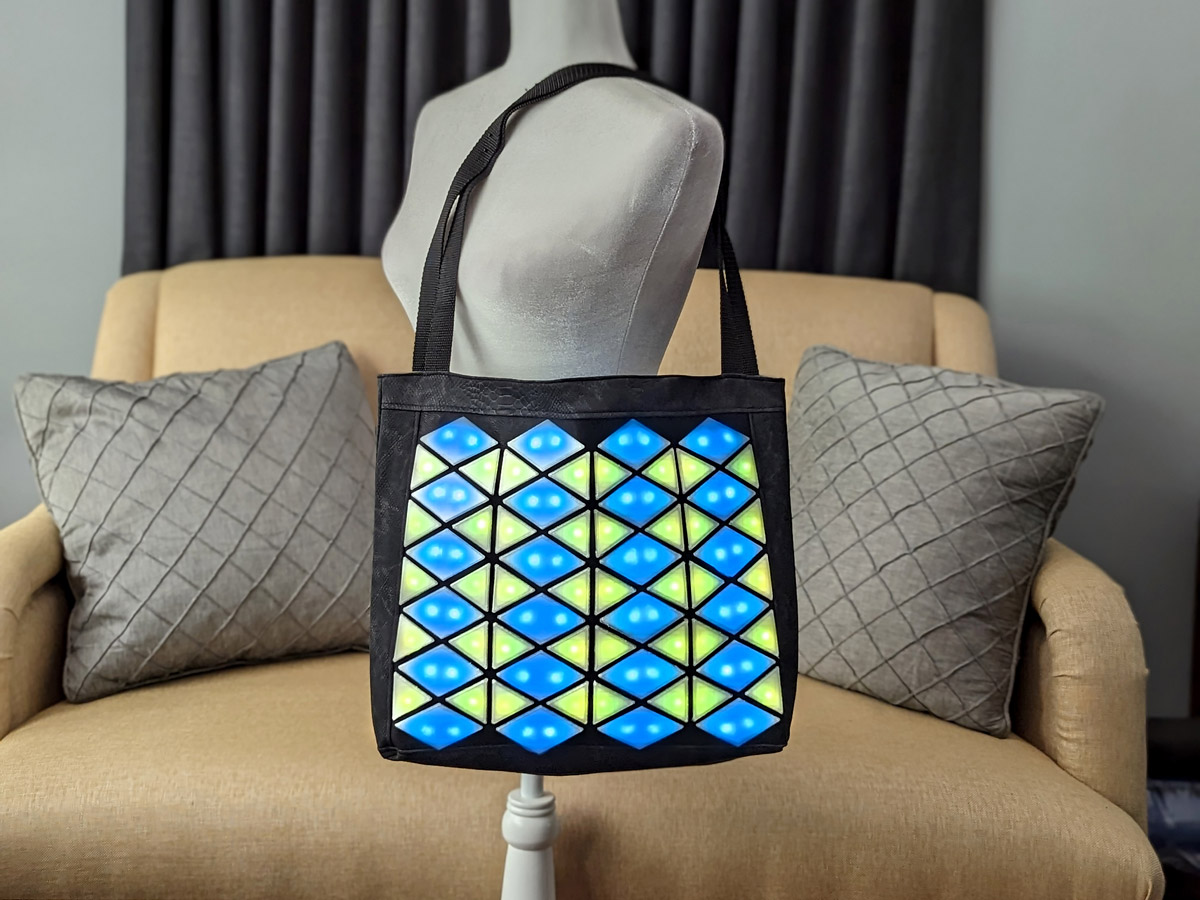
I’m thrilled that this illuminated tote bag is my seventh (!) project write-up to appear in Make: magazine. Coincidentally (or perhaps not), my very first Make: article from 2017 described an LED matrix handbag that displayed animations and scrolling text. This new geometric bag is both retrospective and forward-thinking, as it retains its predecessor’s mix of playfulness and practicality while incorporating more recent maker methods.
Since 2017, novel creative techniques, like 3D printing on fabric, and newly available products, such as uber-flexible LED strings, have continued to expand the potential of wearable tech. My new Tessellated Tote integrates a broad array of maker skills including 3D printing, sewing, and electronics to produce a modern carryall. The bag’s front panel is illuminated by lightweight addressable string lights secured behind translucent tiles which are 3D printed onto a layer of tulle fabric. The tulle holds the individual tiles in a space-filling geometric arrangement that moves and flexes with the fabric around it.
In addition, the tote holds a hidden homage to scientific discovery in its front panel. The 3D-printed diamond/triangle tessellation pattern represents a newly discovered type of exotic condensed matter — a bosonic crystal composed of particles called excitons packed tightly into two overlapping atomic lattices with this tessellated pattern. When turned at a slight angle to one another, the lattices interact in a moiré pattern that traps the excitons just so.
Of course, the Tessellated Tote is fundamentally a fashion accessory. You don’t need to recognize its futuristic tech or catch its subtle scientific references to enjoy its attractive design and colorful LED animations. And you can make it quite inexpensively depending on your choice of fabrics and LED controller.
Whichever aspect of this project most appeals to you, be it futurism or fashion, the result is a pretty and practical satchel that puts the “fun” back in “functional.”









